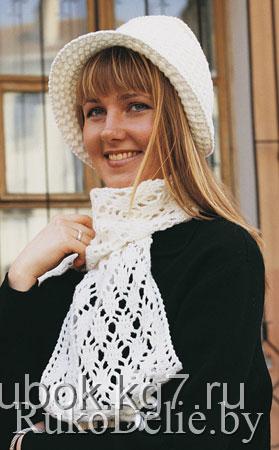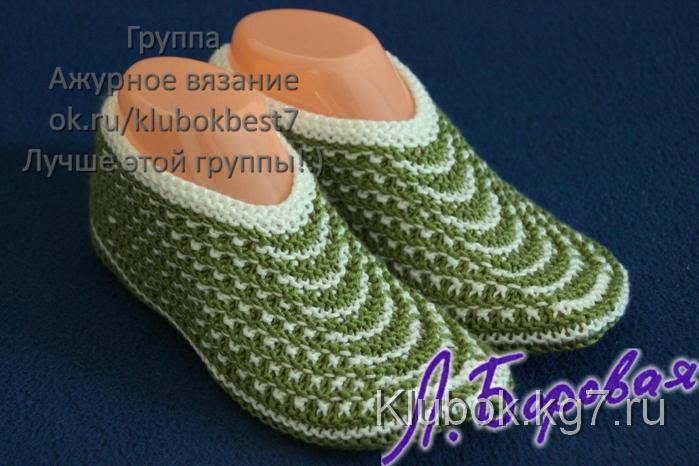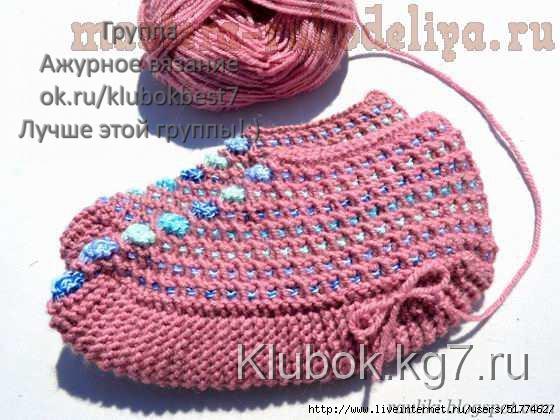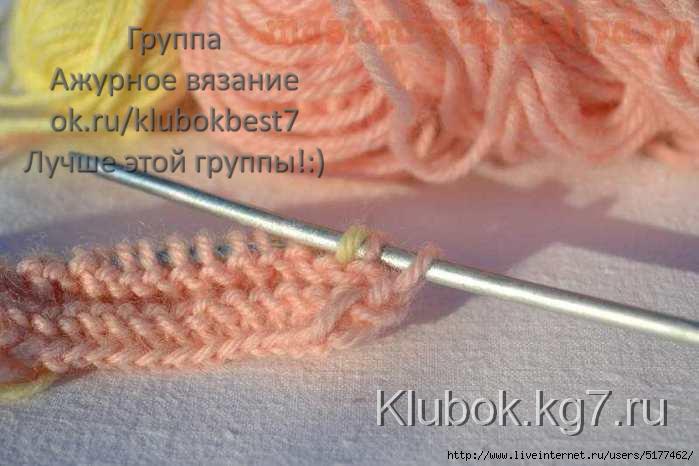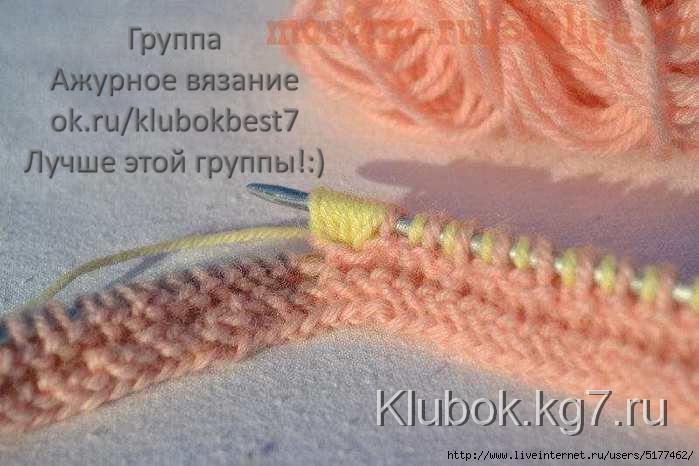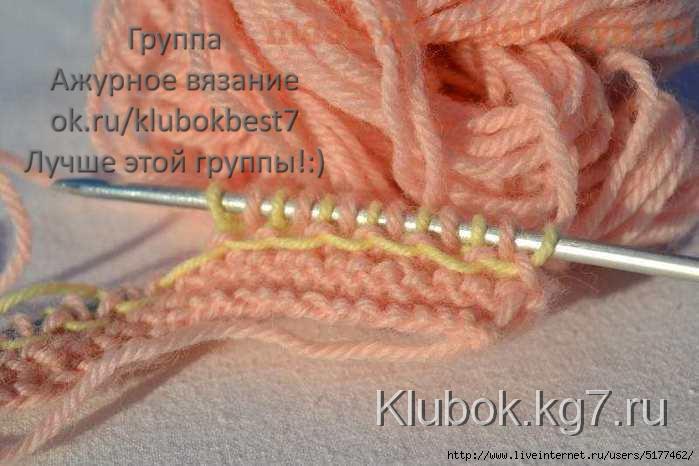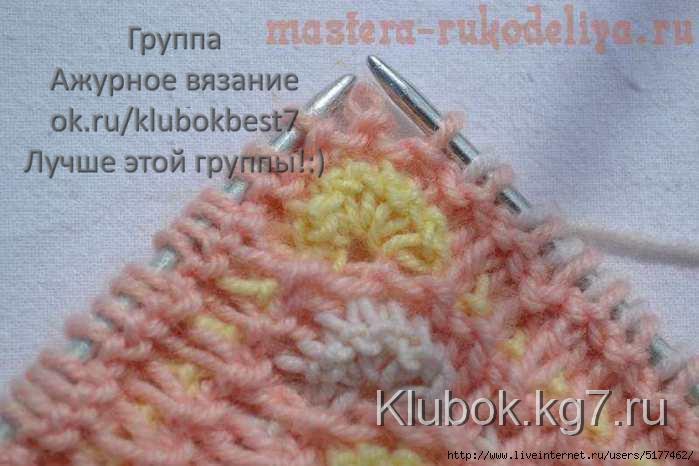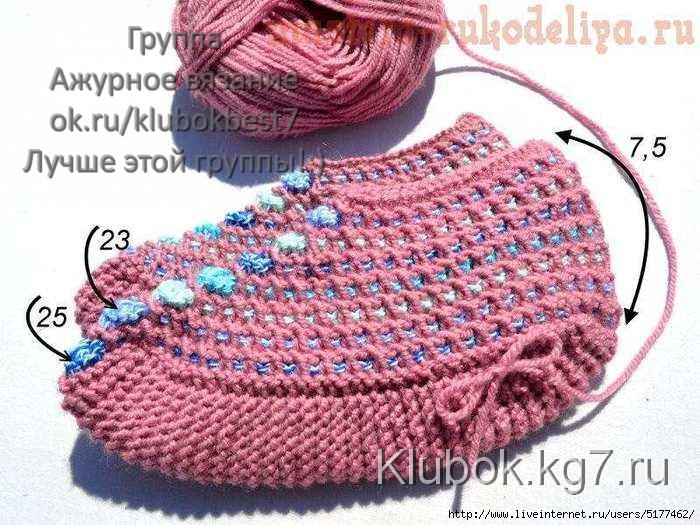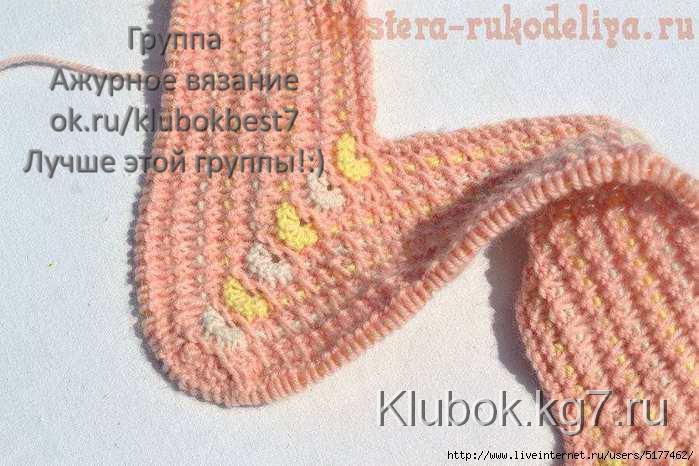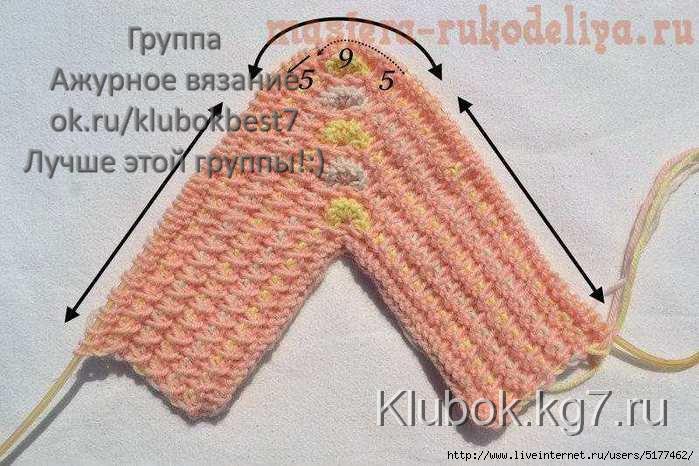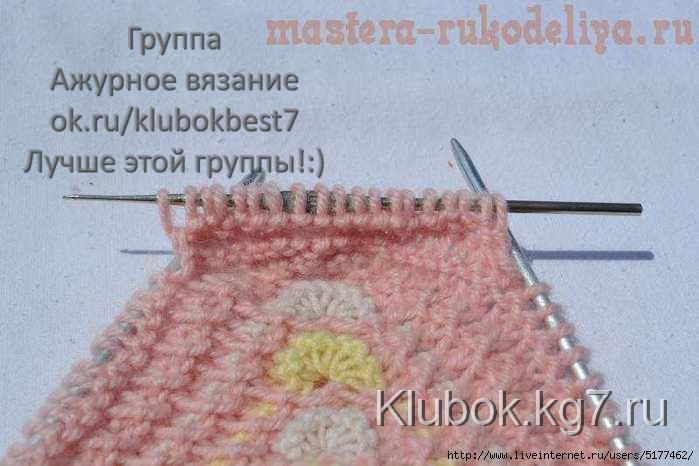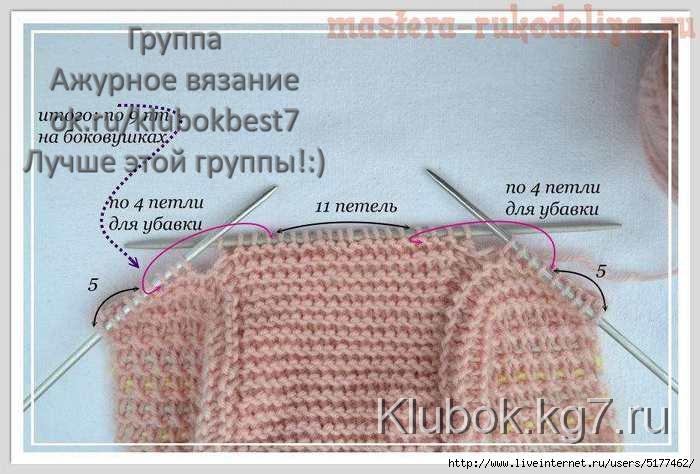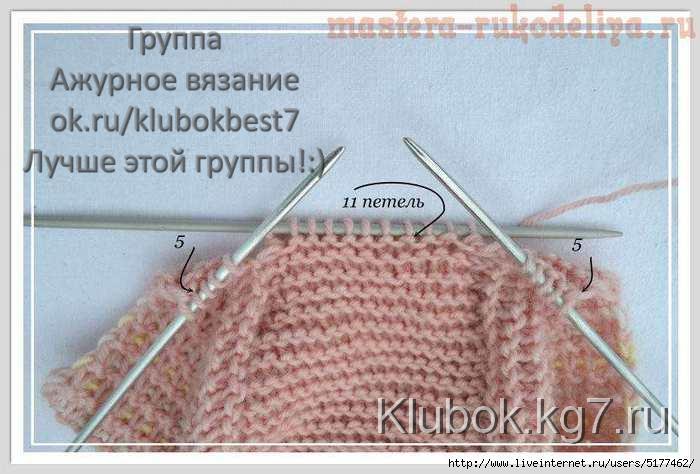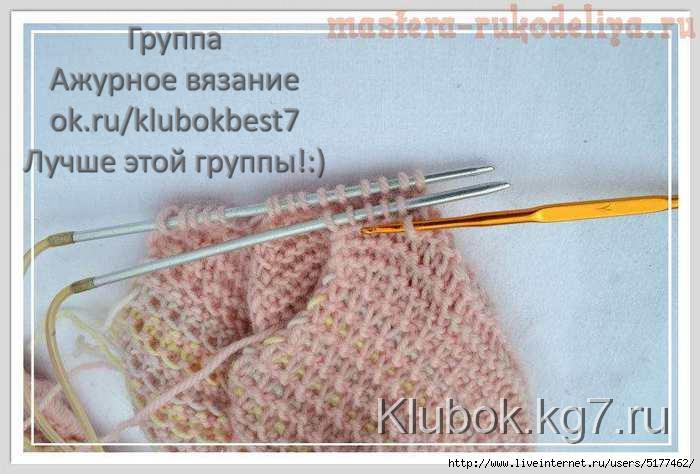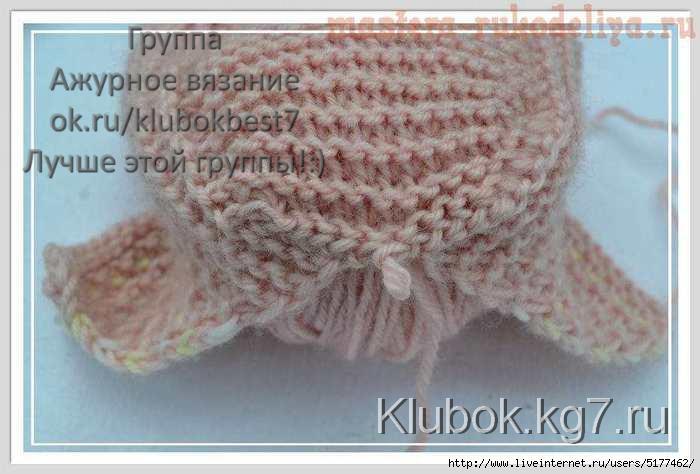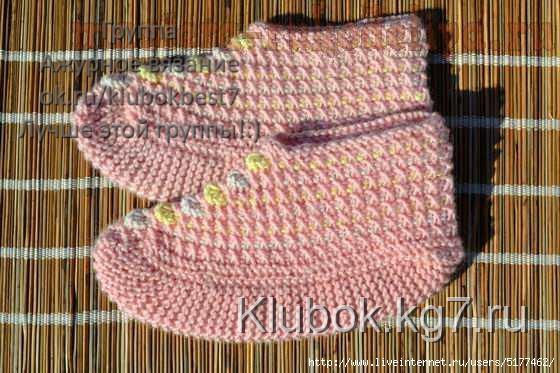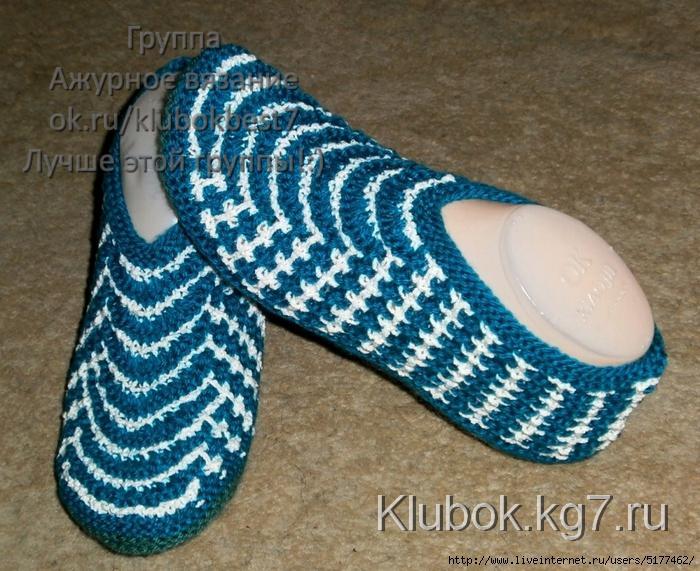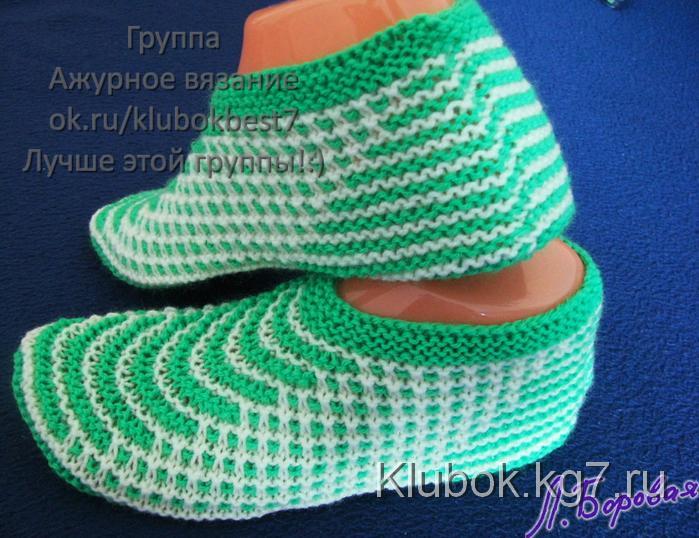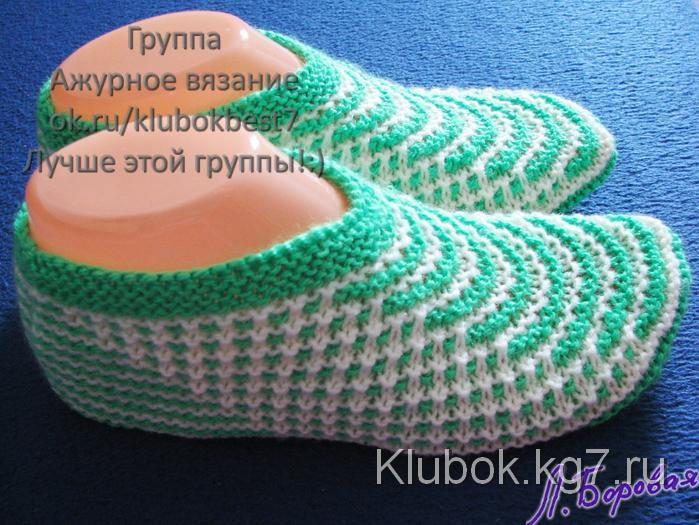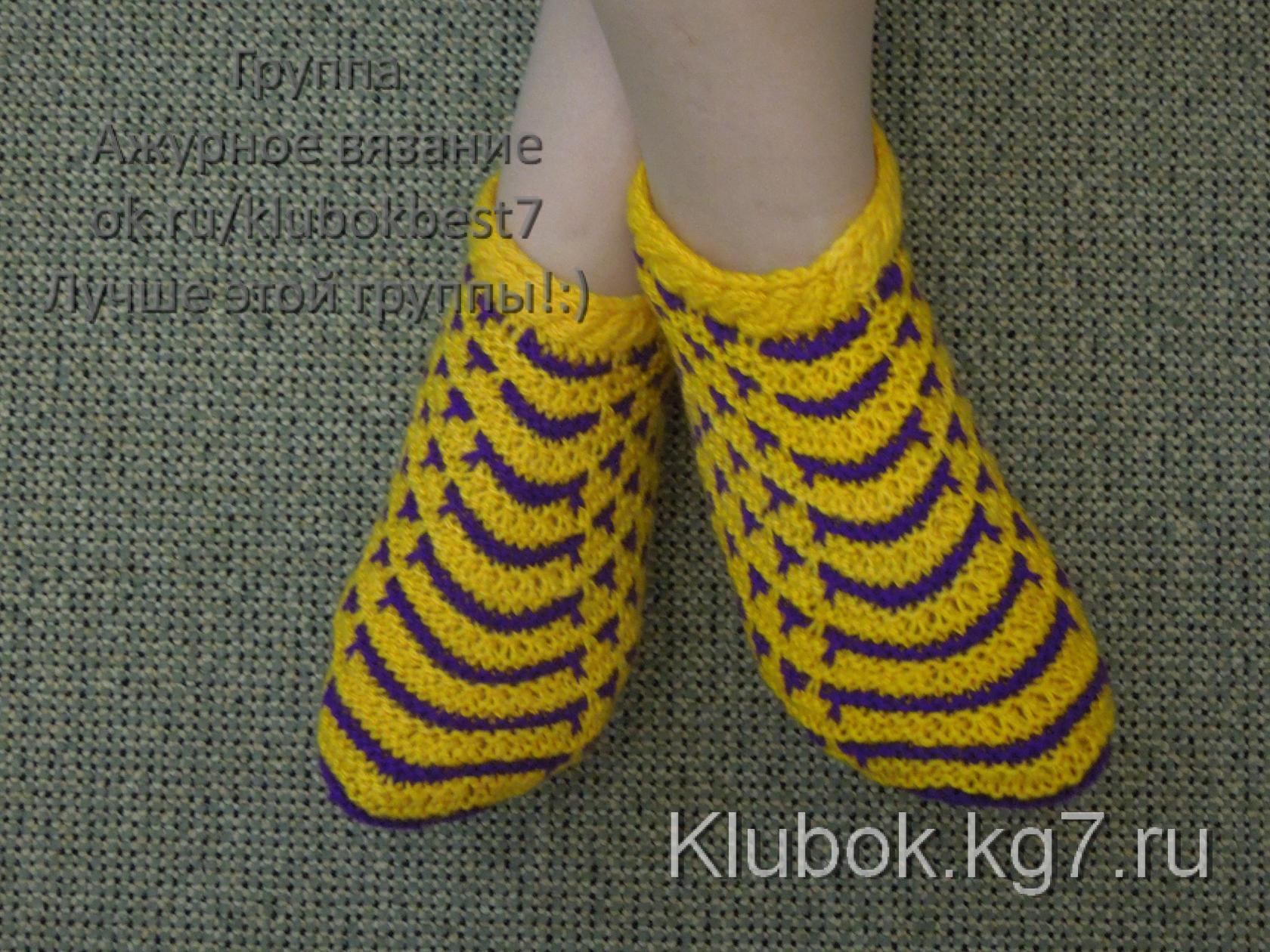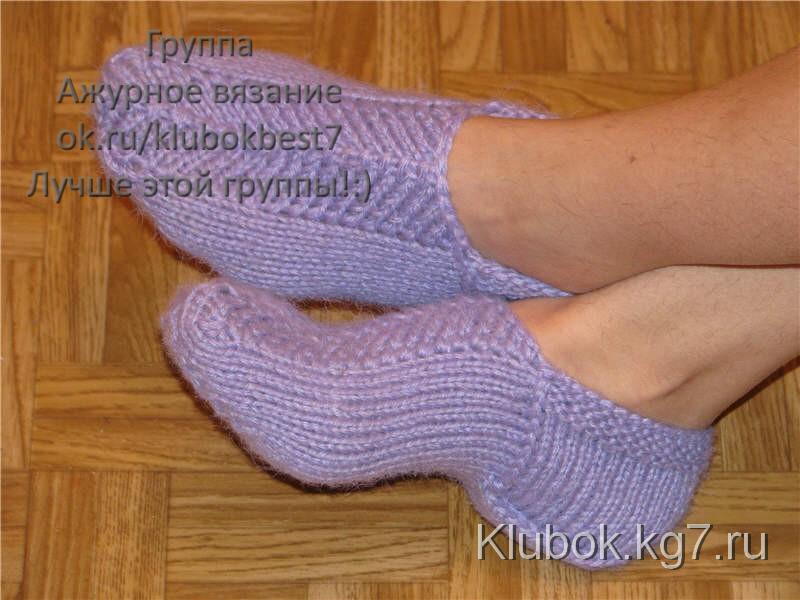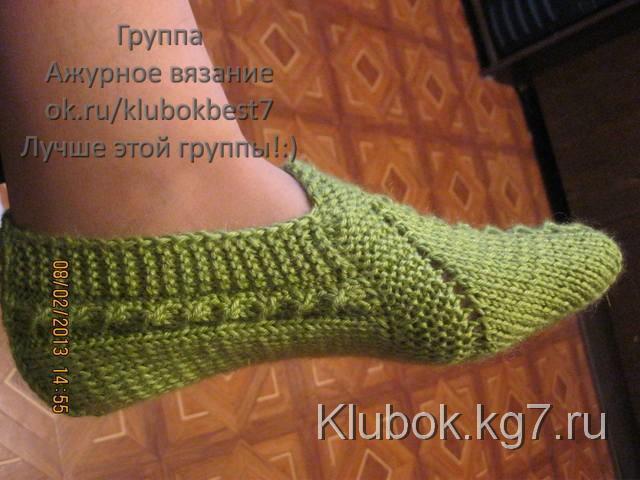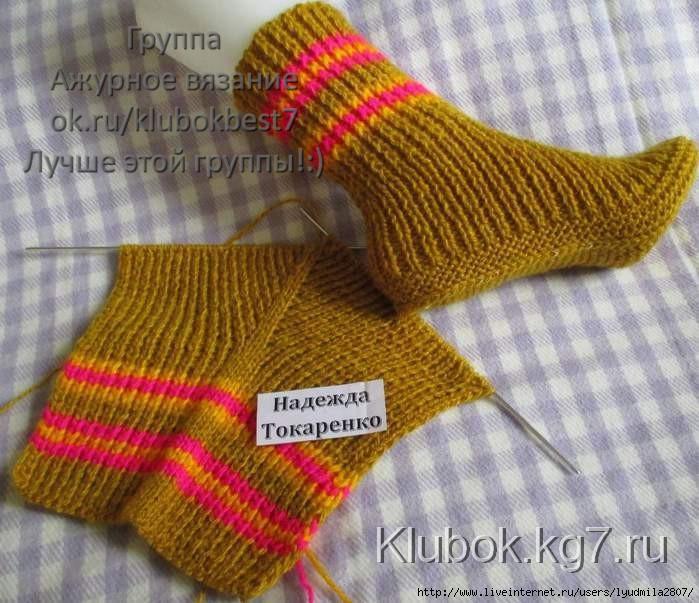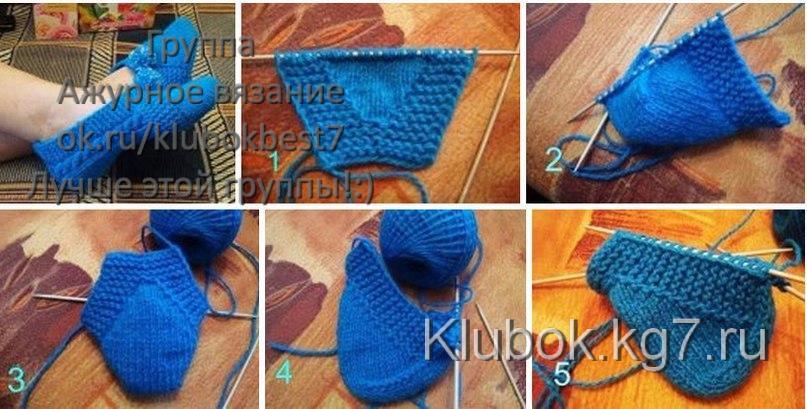Тапочки от Л.Боровой
Добавлено: 10.02.2016 в 22:46 Просмотров: 104325
Тапочки от Л.БоровойKlubokhttp://klubok.work/1/53/6196/Klubokhttps://klubok.kg7.ru/css/image/top-logo.png
Лилия Боровая (Фаргер) Вот по этому описанию вязала:
|
Я вяжу их по оригинальному описанию, наверное только за исключением пятки. Пятку я люблю круглую, без прямых углов.
Тапки "классические" - в пупырышку, ленивым жаккардом. А можно вязать однотонные, полосатые или как угодно. Но я рассмотрю классический вариант, тем более если "пупырышками" вы еще никогда не вязали. 1 ряд (вводим желтую нить): кромочная, 1 петлю снять как лицевую, следующую провязать лицевой, 4-ую снять как лицевую, следующую 5-ую провязать. Когда снимаем петлю - нить за работой. Вяжем до 25-ой петли, средней. Из нее вывязываем 9 петель: лицевая, накид, лицевая... 26-ую снимаем, 27 - провязываем и так до конца. 2 ряд: Розовые петли снимаем, не провязывая, нить перед работой. Желтые вяжем лицевыми, в том числе и все 9 петель по центру. 3-4 ряд: снова в работе розовая нить, вяжем все лицевыми петлями. Следующий этап - повторите еще четыре раза первые 4 ряда. Опять снимаем лицевые и провязываем через одну, а из центральной, но уже не 25-ой, а 29-ой вывязываем 9 петель. Изнаночный ряд: снимаем и провязываем через одну. И 2 ряда "розовым", основным цветом - все лицевые. Чтобы каждый раз не отсчитывать центральную петлю, я делаю так: когда приближаюсь к веерочку предыдущего ряда, внимательно смотрю какая петля у него средняя, и из нее вывязываю. Вот тут на фото специально ее сняла со спицы. Как расчитать размер: На примере носков для мужа: Как перейти к подошве и ее посчитать: Посмотрите на свой следик и прикиньте, сколько петель вы хотите отложить для подошвы. В мужниных у меня 9 см, в розовеньких - 8. Это получилось 19 (17 у мужа) петель. И даже если у вас прикинулось четное количество, уберите 1 петлю, пожалуйста, подошва должна быть нечетная. А число петель на боковинках, соответственно, четное. По центру стрелочками - будет подошва. По бокам - боковинки. Как легко отсчитать середину подошвы, посмотрите, еще раз на рисунок. Я, не считая, вяжу до конца веерка, внимательно смотря, где заканчиваются эти 9 петель, затем: раз, два, три, четыре... 5+6 две вместе, повернули. Вяжу 18 петель, 19+20 две вместе. Повернули. Как я делаю пятку: Люблю плавные линии и округлости, поэтому пяточка у меня вот такая. Раскладываю перед собой вязалку и смотрю, сколько петель я хочу оставить непосредственно для пятки. Из 19 петель отобрала 11. И начинаю перебирать пальцами петли, как "счеты щелкаю". :) Эти завершающие 11 петель останутся в последнем ряду открытыми и соединятся с открытыми петлями боковушек. Значит 5 петель с одной стороны, и 5 с другой (можно по 6 оставить, т.е. или на 1 петлю больше, или меньше). Пасьянс сошелся, чтобы переходить к пятке, мне требуется по 9 петель на боковушках. Выполняю убавки: 4 лицевых и 4 изнаночных ряда провязываю по 3 петли вместе. Крючком подхватываем петлю с боковушки, затем петлю с подошвы и протягиваем через первую петлю. Снова подхватываем петлю с боковушки и протягиваем сквозь петлю на крючке. "Связываем" крючком петли первой боковушки и петли половины пятки. В итоге остается 1 петля, рядом торчит хвост. Продеваем хвост в петлю и сшиваем по кромочным задник. Вуаля: |
только набрала 50 пет., вообще то сколько петель набирать решать Вам, всё зависит от толщины пряжи, размера спиц и как Вы вяжете туго, слабо ... Я выделила 6 центральных петель и вязала из одной петли две : первую петлю лицевой как обычно, а вторую из этой же петли, не снимая ее со спицы за заднюю стенку, получилось две петли из одной, теперь снимаем со спицы и так все 6 пет. На изнаночной стороне эти 12 пет. провязала лиц, Добавляются петли только в вязание основного цвета, у меня это темный цвет. Но в последней вывязки я не удваивала петли, а просто провязала 6 пет лиц., так лучше смотрится мысок, потом 6, 8 рядов платочной вязкой, а затем начала вязать подошву, на 9 пет. закрыв все петли сзади сшила. Узор "Двухцветные крестики". Расчет петель, необходимых для узора: их число должно делиться на 2 + 1 петля + кромочные.1,2 и 5, 6 ряды выполняются условно темной нитью, все остальные условно светлой.3 и 4 ряд вяжутся одинаково с одним отличием: одна лицевая чередуется со снятой как изнаночная петлей (нить обязательно спереди) и так до конца ряда.7 и 8 ряды полностью повторяют 3 и 4, но рисунок передвигают на 1 петлю.
Узор "Двухцветные крестики". Расчет петель, необходимых для узора: их число должно делиться на 2 + 1 петля + кромочные.1,2 и 5, 6 ряды выполняются условно темной нитью, все остальные условно светлой.3 и 4 ряд вяжутся одинаково с одним отличием: одна лицевая чередуется со снятой как изнаночная петлей (нить обязательно спереди) и так до конца ряда.7 и 8 ряды полностью повторяют 3 и 4, но рисунок передвигают на 1 петлю.
Лилия Боровая (Фаргер) ответила Светлане и Вове Тапочки - следки вязала по принципу тапочек "Ракушка" из 1 вяжем 7 или 9.Увидела на просторах интернета и связала, спасибо всем кто делится своим мастерством# .Я выделила 8 центральных петель и вязала их из 1-ой две, то есть после вывязывания петли удваивались. Но в последней вывязки я не удваивала петли, а просто провязала 8 пет лиц., так лучше смотрится мысок, потом 6, 8 рядов платочной вязкой, а затем начала вязать подошву, на 11 пет. по принципу пятки.
Лилия Боровая (Фаргер) ответила Juri Tatiana Да, в каждом лицевом ряду вяжем из 8 -ми две, в изнаночном ряду уже провязываете 16 пет, потом опять 8-мь центральных из 1-ой 2, то есть 8 -мь пет. у Вас добавились, 4 пет. справа и 4 пет слева, так прибавляете до нужной глубины следка, это тоже самое, если б Вы вязали бы тапочки с ракушками из 1 пет - 7 или 9, но мне больше нравится так вязать, легче и быстрее.






